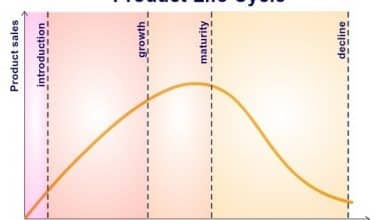Android is a mobile operating system software that works to incorporate hardware ( ARM) and software resources and middleware. It was founded by Andy Rubin, Rich Miner, Nick Sears, and Chris White. Android activity allows for different types of hardware to work together while simultaneously providing a platform for various bits of software to work with the hardware. This means that Android, by definition, must also be open source, and this nature is one of the main reasons it is the most popular operating system in the world. Just as, when most people think of Android, they think of Android phones. Nonetheless, it’s true that most devices are smartphones, but there are plenty of other devices out there with Android on board. Let us see some examples of an Android fragment with the service.
Examples Of An Andriod
- Chrome OS
- Windows 11
- Phones
- Smartwatches
- Wear Os
- TV platform
- Android Auto
- Chromebooks
- Cameras
- HTC Dream
- Tablet PC
- Music players
- Netbooks
- Games
What Does an “Open Source” Mean?
It means the copyright owner allows its use for any purpose, without any need for financial remuneration. Therefore, as mentioned earlier, the core code of Android is based on open-source software called Linux.
The person or company using the software simply needs to abide by a set of rules related to the licensing of that software. This makes it easy for companies of all sizes to create products without needing to invest in creating their own operating system. This is why you find them in all manners of electronics from different brands.
Components Of An Android Operating System
An android operating system is a stack of software components,
#1. User Interface.
The user interface of the Android operating system is straightforward, and these features make it very user-friendly.
#2. Multiple Language Support.
Android supports multiple languages in its operating system and one can change the language very easily based on one’s requirements. Hence, the International languages supported are Spanish, German, Chinese, Dutch, French, German, Japanese, Korean, Russian, and many more. Some native language of India is also supported like Hindi, Marathi, Gujarati, Punjabi, and many more.
#3. Multi-tasking.
Android provides support to run apps and services in the background with ease which allows users to use multiple apps at the same time.
#4. Connectivity:
Android has extensive support for connectivity such as WiFi, Bluetooth, Hotspot, CDMA, GSM, NFC, VOLTE, UBB, VPN, 3G network band, and 4G Network Band.
#5. Extensive Application Support
Android has a Play Store which is used as the major tool to download and update applications on the operating system. Most importantly, you can download the installer(often called an APK file) and install it manually, but it is not recommended as a third-party application and could be prone to some security breaches
Classifications of Operating System
Five of the most common operating systems are,
- Application
- Linux kernel
Application Framework
- Android Runtime
- Platform libraries
Is Android A language?
YES: because it requires a little more guidance, specifically in choosing the right programming language which is,
- Java
- Kotlin
- C++
- C#
- Python
- HTML, CSS, JavaScript
- Dart
- Corona
What Is An Android Phone
An android phone is a powerful, high-tech smartphone that runs on the Android operating system(OS) developed by Google and used by a variety of mobile phone producers mainly because they can do a lot more than just make calls or send and receive text messages.
Android phone is designed for users to exploit mobile devices intuitively with finger movements that mirror common motions, such as pinching, swiping, tapping, user alerts, navigation buttons, etc.
In addition, Android supports a large number of applications on Smartphones. These applications are more comfortable and advanced for users. The hardware that supports android software is based on the ARM architecture platform. Android is also an open-source operating system which means that it’s free and anyone can use it.
Element of an Android Phone
- A circuit board containing the brains of the phone
- An antenna
- A liquid crystal display (LCD)
- A keyboard (not unlike the one you find in a TV remote control)
- A microphone
- A speaker
- A battery
Characteristics of An Android Phone
To begin, Android OS displays the home screen which is the primary navigation hub for Android devices and comprises widgets and app icons. Widgets are informational displays that automatically update content such as weather or news. The home screen display can vary based on the device manufacturer that is running the OS. Users can also choose different themes for the home screen via third-party apps on Google Play.
Furthermore, a status bar at the top of the home screen depicts information about the device and its connectivity, such as the Wi-Fi network to which the device is connected or signal stability. Users can pull down the status bar with a swipe of a finger to view a notification screen.
Android OS also includes features to save battery usage. The OS pauses applications not in use to preserve battery power and CPU usage. It includes memory management features that instantly close inactive processes stored in its memory.
Finally, Android runs on both of the most widely deployed cellular standards, GSM/HSDPA and CDMA/EV-DO. In addition, Android also supports
- Bluetooth
- Edge
- 3G communication protocols, like EV-DO and HSDPA
- Wi-Fi
- Autocorrect
- SMS and MMS messaging
- Video/still digital cameras
- GPS
- Compasses
- Accelerometers
- Accelerated 3D graphics
- Multitasking applications
- Updated versions
Factors to Consider While Buying An Android Phone
#1. A strong Processor
The processor is the brain of your smartphone and dictates all the activities of your phone including gaming, photography, storage, communication, and web browsing. In other words, without a strong processor (otherwise called a chipset or an SoC), the actions you can perform on your phone will be limited.
#2. Strong Memory
Unlike ROM, which is the main storage of your phone, RAM is used for short-term memory. The more RAM you have, the easier it will be to multitask on your device. This is helpful because more apps can remain running in the background without closing. In addition, for an average user, 6GB of RAM is and can be easily used to do several activities together.
#3. Storage Capacity
We download movies, games, apps, documents, photos, videos, and songs on daily basis and all of it goes straight into our devices. Plus, since cameras are getting better, the quality (and the file size) of photos and videos is increasing too. Therefore, phones with 128GB upwards are recommended for maximum storage.
#4. Screen Display
Depending on your allocation, the display specs will vary. But at the very least, a modern smartphone display should have a 120Hz refresh rate, FHD resolution, AMOLED colors, and more than 85% screen-to-body ratio. Unlike many other features such as a flashlight or speakers, a smartphone display is in use pretty much all the time.
#5. Battery with Fast Charging
Anything below a battery capacity of 5000mAh should not be considered, Hence, your battery life can be extended if needed, but having a fast charger of at least 25W will be of great assistance.
#6. An Effective Camera System
Some phones tend to magnify color and sharpness, while others opt for a more realistic appearance. In fact, some are excellent at low-light photography but take bad videos, while others create cinematic masterpieces but lack fun filters and attributes. Instead, check the aperture and sensor size to indicate the actual camera quality.
Other Important Features Include
- Built-in security
- Mobility with 4/5G
- Price
- Brand
- Social influence
Which is The Number #1 Phone in the World?
The number of phones in the world currently is The Samsung Galaxy S23 Ultra, beating out Apple iPhone 14 Pro Max face-off.
Advantages of an Android Phone
- Sideload apps apart from the play store
- Lots of Hardware Innovations
- Expandable Memory
- Widgets
- Several Phone Options
What Is An Android Fragment
An android fragment is a Graphical User Interface component of an Android fragment that resides within the activities of an Android application. Android fragment represents a portion of the UI that the user sees on the screen. Android Fragment cannot exist outside an activity.
Uses Of Android Fragment
- Modularity: If a single activity is having too many functional features, it’s better to divide it into independent fragments, hence making the code more methodical and easier to retain
- Reusability: If we define any particular feature in an android fragment, then that feature more or less becomes a reusable component that can easily stand out to any activity.
- Adaptability: If we break UI components of an app screen into fragments, then it becomes easier to change their orientation and placement, based on screen size, etc.
Types of Android Fragment
#1. Single Fragment
Single fragments show only a single view for the user on the screen. These are for handheld devices such as mobile phones.
#2. List Fragment
List fragments are those that have a special list view feature. In this, there’s a list and the user can choose to see a Sub-Activity.
#3. Fragment Transactions
Fragment transactions are for the transition from one fragment to another. It supports switching between two fragments.
How to Create and Use Android Fragment
This involves several simple steps to create Fragment.
1. First, decide how many fragments you want to use in an activity. For example, let’s use two fragments to handle the landscape and portrait modes of the device.
2. Next, based on the number of fragments, create classes that will extend the fragment class. The Fragment class has the above-mentioned callback functions used to override any of the functions based on your requirements.
3. Corresponding to each fragment, you will need to create layout files in an XML file. These files will have a layout for the defined fragments.
Finally, modify the activity file to define the actual logic of replacing fragments based on your requirement.
What Is An Android Service
Android service is a special component that facilitates an application to run in the background to perform long-running operation tasks. The prime aim of a service is to ensure that the application remains active in the background so that the user can operate multiple applications at the same time.
Examples Of An Android Service
- Master/Detail Flow
- Navigation Drawer Activity
- Settings Activity
- Scrolling Activity
- Tabbed Activity
- Fragment + ViewModel
- Native C++
- Fullscreen Activity
- Google Admob Ads Activity
- Google Maps Activity
Classifications Of Android Service
#1. Foreground Services
Services that notify the user about its ongoing operations are termed Foreground Services. Such as in downloading a file, the user can keep track of the progress in downloading and can also pause and resume the process.
#2. Background Services
Background services do not require any user intervention. These services do not notify the user about ongoing background tasks and users also cannot access them. The process is like scheduled syncing of data or storing of data that falls under this service.
#3. Bound Services:
This type of android service allows the features of the application like activity to bind themselves with it. Bound services perform their task as long as any application component is bound to it. More than one component is allowed to bind itself with a service at a time.
Importance Of Android Service
First, you can remotely control your Android device and do the following things with Android service. Android service supports adding up multiple devices. It is easy to view them in a drop-down list view after the android service manager has been installed and connected.
Secondly, it is used to recover missing or stolen phones either by using any of these actions, lock ring, wipe. Once you’re sure that there are no chances to recover your lost Android device, you can use Android Device Manager to remotely wipe your device clean. That way, no one can misuse your device or the data that you had stored on it.
Lastly, there is an option to log in as a “Guest” on Android Device Manager. You can use this to let a friend of yours locate and control (lock, ring or wipe) his device which has either been lost or stolen.
What Is An Android Activity
The android activity provides the window in which the app draws its UI. This window typically fills the screen but may be smaller than the screen and float on top of other windows. For example, an email app might have one activity that shows a list of emails, another to compose an email, and so on.
Types Of Android Activity
It’s important to understand that an android Activity has a lifecycle: that is to say that it can be in one of several different states depending on what is happening with the app and with the user interaction.
Android Activity Lifecycle Methods
| Method | Description |
| onCreate | is called when the activity is first created. |
| onStart | is called when the activity is becoming visible to the user. |
| onResume | is called when the activity will start interacting with the user. |
| onPause | is called when activity is not visible to the user. |
| onStop | is called when activity is no longer visible to the user. |
| on restart | called after your activity is stopped, before starting. |
| onDestroy | called before the activity is destroyed. |
Advantages Of An Andriod
- Any new publication can be done easily and without any review process
- Uses a different messaging App for SMS
- Android offers an open platform
- Easy access to the Android App market
- Cost Effective
- Upcoming versions have support to save RAW images
- Built-in Beta Testing and staged rollout
- Native integration with Google cloud storage. 15GB free, $2/mo for 100GB, 1TB for $10. Apps are available for Amazon Photos, OneDrive, and Dropbox.
- Booming Job Prospects
Final Tips
Android is a mobile operating system software that works to incorporate hardware ( ARM) and software resources and middleware. It was founded by Andy Rubin, Rich Miner, Nick Sears, and Chris White.
Related Articles
- Double-Entry Accounting Explained!!! Definition, How it Works, & Examples
- Jumia Flash Sales 2023: Top 10 discounts to look out for
- .How To Conference Call On Android for Business
- SOFTWARE MANAGEMENT SYSTEMS: Types, Features, and Examples
- 17 Best Personal Finance Software in 2023 (Free & Paid Options)
- MOM BLOGGER: What Is It &What You Must Know
Related References
investopedia.com






